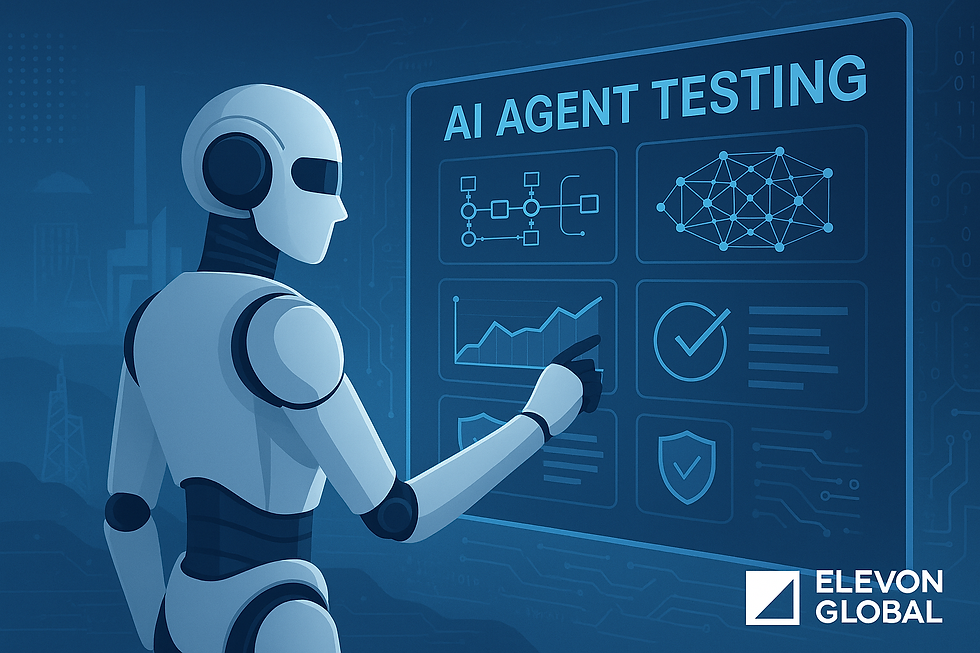How Can We Test AI Agents?
- Elevon Global Tech

- Aug 3, 2025
- 2 min read
Updated: Aug 7, 2025
AI agents are transforming industries—powering chatbots, autonomous systems, and intelligent business workflows. While they open new possibilities, ensuring their accuracy, reliability, and safety is critical before they reach production. Here’s how you can approach testing AI agents effectively:

1. Define Clear Goals & Use Cases
Start with explicit expectations:
What tasks should the AI agent accomplish?
What performance metrics matter—speed, accuracy, compliance, cost savings?
Clear goals allow QA teams to design meaningful test cases.
2. Test Data Quality & Diversity
An AI agent is only as good as its training data:
Coverage: Ensure data includes a wide variety of use cases and edge conditions.
Bias Detection: Check for unintentional bias, especially in decision-making agents.
Synthetic Data: Use synthetic datasets to simulate rare or risky scenarios.
But How Can We Test AI Agents?
Functional Testing
Intents & Responses: Validate that the agent understands user intent correctly and responds appropriately.
Multi-Turn Conversations: For conversational agents, verify context retention over multiple interactions.
Edge Cases: Test with incomplete, incorrect, or ambiguous inputs.
4. Performance Testing
Latency: Ensure response times meet expectations.
Scalability: Simulate high-load conditions to check stability under peak usage.
Resource Utilization: Measure how efficiently the agent uses computational resources.
5. Explainability & Compliance Testing
AI decisions should be explainable:
Explainability (XAI): Validate that reasoning behind decisions can be interpreted by humans.
Regulatory Compliance: Ensure adherence to frameworks like GDPR, CCPA, or AI-specific ethical guidelines.
6. Safety & Security Testing
Adversarial Testing: Simulate attacks (e.g., prompt injection in LLM agents).
Data Privacy: Ensure sensitive data is not leaked.
Fail-Safe Behavior: Check how the agent behaves when encountering unknown scenarios.
7. Continuous Monitoring & Feedback
Testing doesn’t end after deployment:
Drift Detection: Monitor changes in model performance over time.
Human Feedback Loops: Integrate human-in-the-loop (HITL) for continuous improvement.
Automation: Implement CI/CD pipelines for AI to automatically validate every update.
Conclusion
Testing AI agents requires a multi-layered approach—covering data quality, functionality, performance, security, and compliance. By implementing rigorous QA practices, organizations can ensure their AI agents are safe, reliable, and production-ready.
Need help building a strong QA strategy for your AI agents?We at Elevon Global Tech offer Complimentary AI QA Assessment Surveys to help organizations assess and strengthen their AI testing frameworks.


Comments